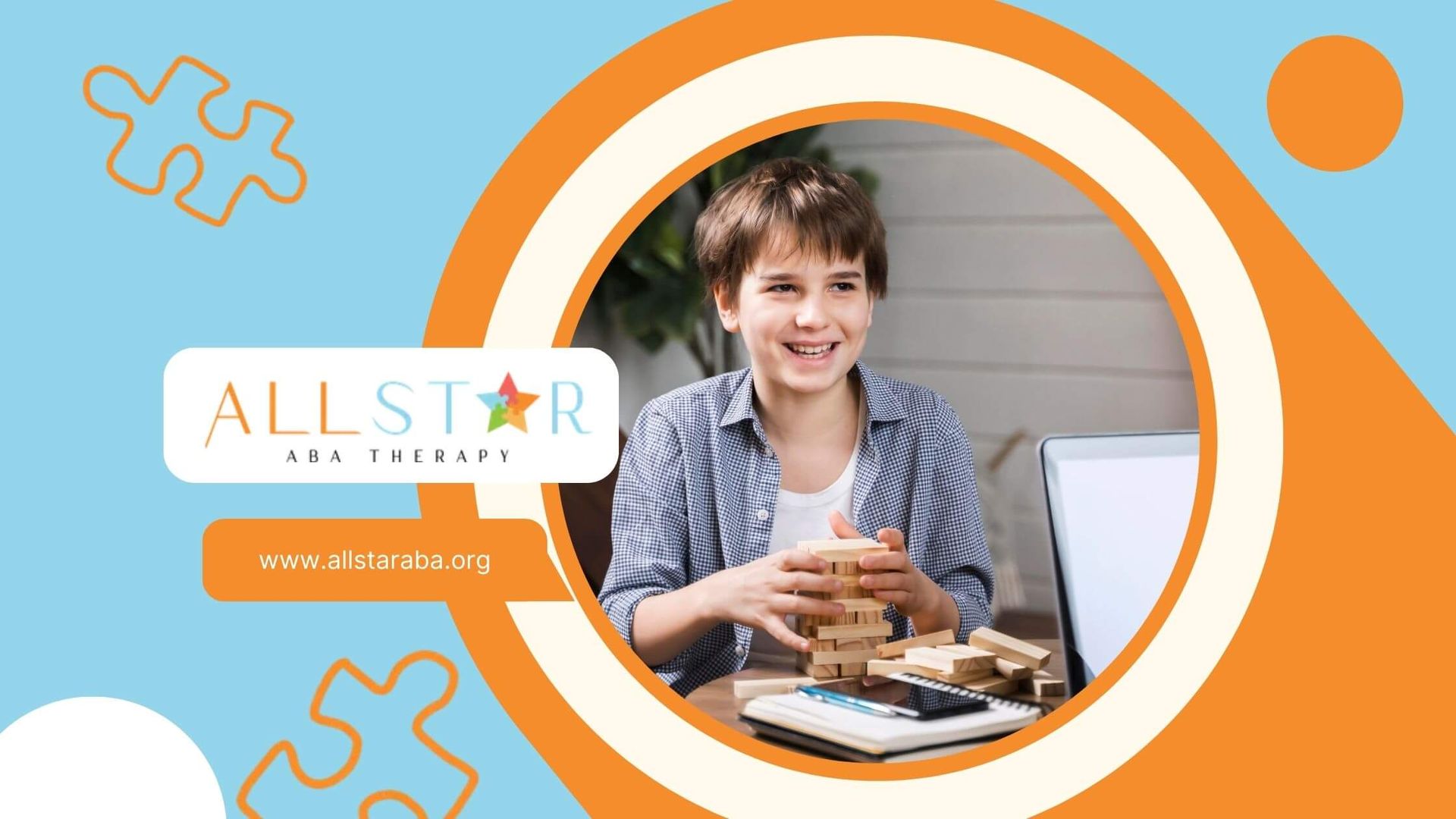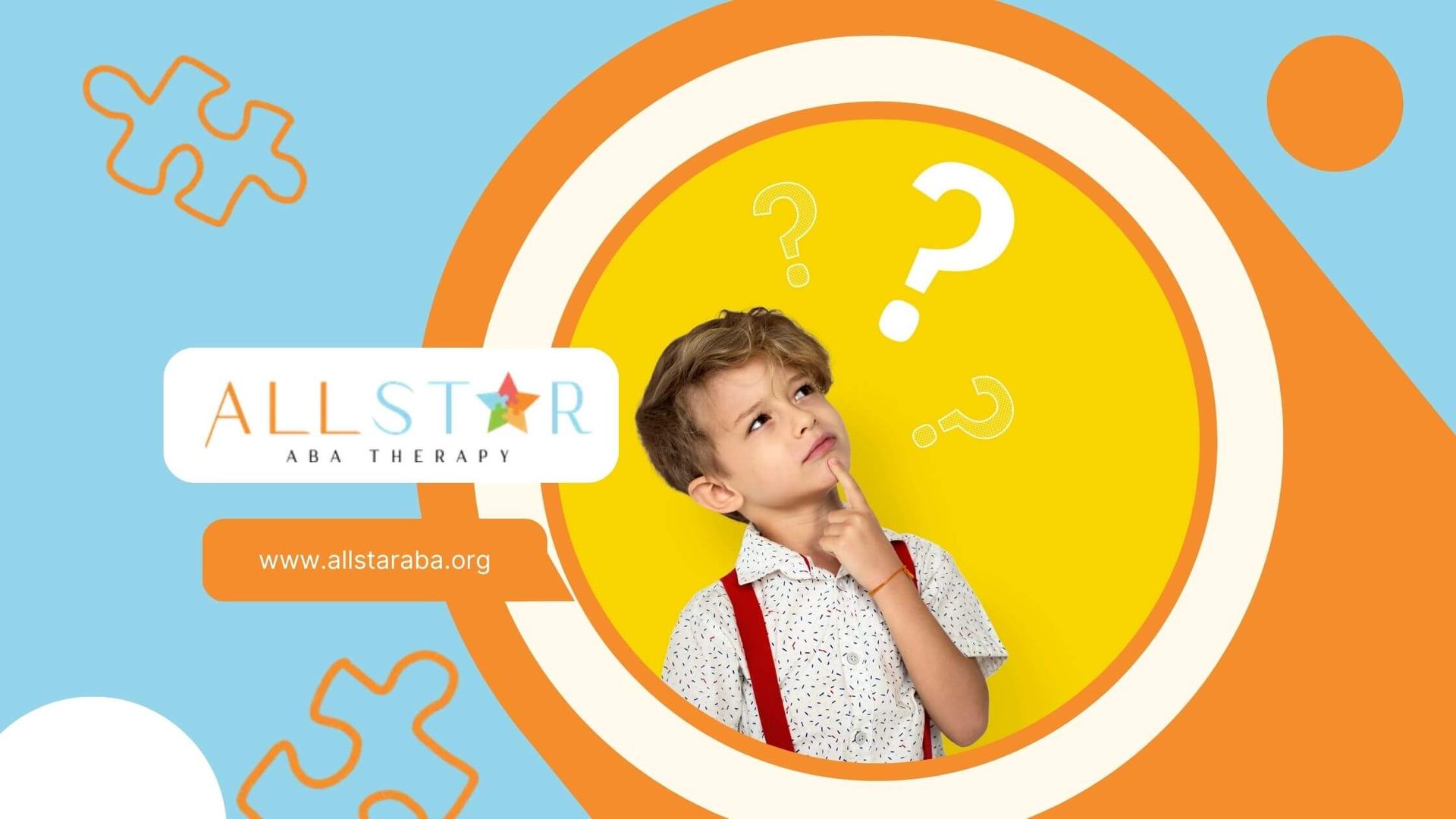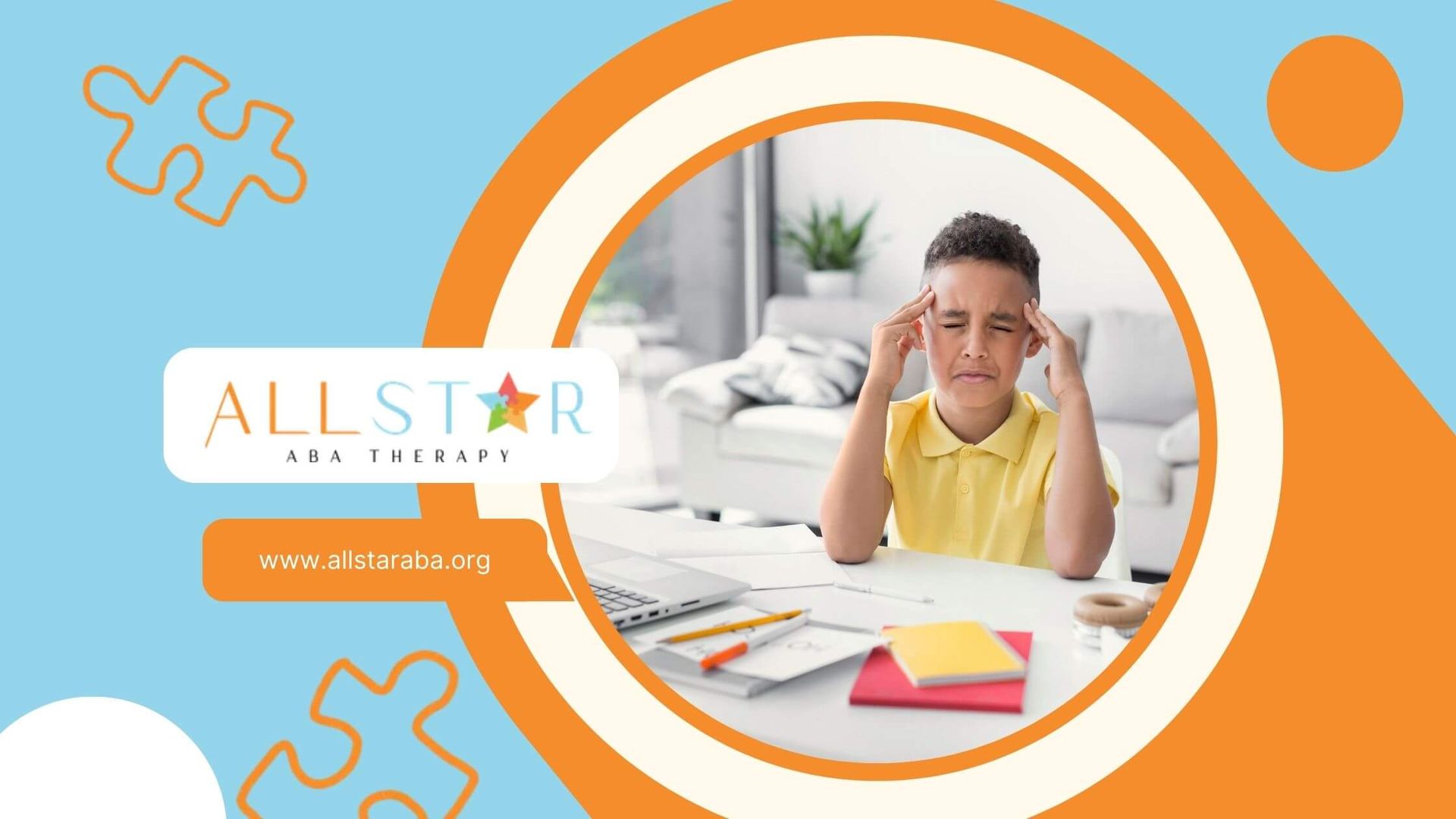New Paragraph
How to Calm an Autistic Child: Expert Tools and Techniques
Living in Maryland, I’ve worked with many families through All Star ABA to help their children cope with overwhelming sensory input. Calming an autistic child requires more than good intentions—it takes the right tools, understanding, and a supportive plan.
This guide breaks down expert-backed calming techniques tailored for your child’s needs.
Understanding Autism and Its Effects on Children
Autism spectrum disorder brings unique challenges for children. It affects how they sense the world and interact with others. Sensory overload can cause increased feelings of anxiety and make them feel uncomfortable. This may lead to meltdowns or strong reactions.
Many autistic children find comfort in familiar activities and use sensory tools like fidget toys or deep pressure stimulation to help them feel better. By understanding these sensory differences, caregivers can create a safe environment. This can help reduce new triggers and provide a place for relaxation and reassurance.
What is Autism?
Autism spectrum disorder (ASD) is a condition that affects how people develop. It influences communication, how they feel sensory input, and how they interact with others. For those with autism, sensory differences can change how they see the world. Certain places can feel overwhelming because of bright lights, loud noises, or strange smells. This can cause loss of control and stress.
It's important to understand these details. Many families use social stories to help their children learn social rules and changes. These stories explain daily activities in a simple way, which helps reduce confusion and anxiety.
Also, it’s important to remember that autism is a spectrum, meaning it affects each individual differently. Some children may feel a bit uncomfortable, while others might have more intense challenges.
Understanding that each child with autism has their own way of experiencing it is crucial. This knowledge helps families meet the unique needs and behavior of their child. It can also help them find balance in their emotional and sensory experiences.
Common Challenges Faced by Autistic Children
Autistic children often face sensory overload. This happens when their senses get too much input. It can cause a complete loss of control, resulting in shouting, crying, or withdrawing. A sudden change in routine can also cause distress. This may lead to behaviors that others may not understand.
Another big issue is finding triggers. These are specific sounds, colors, or activities that can make them uncomfortable. New triggers can be hard to notice and need careful watching by the caregiver. With some expected responses and surprises, having a set of personal strategies is important for providing support.
For some children, discomfort can look like repetitive actions or avoiding things. This shows they need to calm down and reset. By understanding these signs and helping with the right actions, caregivers can help their child feel better. This way, the child's surroundings can be more comfortable for them.
Preparing to Calm an Autistic Child
Preparation is very important when helping an autistic child who has emotional or sensory challenges. Caregivers who have tools like sensory toys and methods to manage strong reactions can give better support. It's also helpful to create a safe environment to avoid situations that may cause overstimulation.
By watching for signs like pacing or becoming quiet, you can see when the child might be upset. With these strategies, helping children stay calm can be easier for both you and them.
Essential Tools and Resources Needed
Arming yourself with the right tools can really help when calming an autistic child. Sensory toys like fidget spinners, squishy balls, and weighted stuffed animals give tactile relief. These toys help kids focus during tough times and meet their different needs for sensory input.
Deep pressure stimulation tools, like weighted blankets, can calm children who are overstimulated by providing comforting pressure. This feeling often helps kids relax and sleep better. Noise-canceling headphones are useful too. They lessen loud sounds and make outings more pleasant.
Creating a Supportive Environment at Home
Providing a supportive environment is essential for fostering calm and security for autistic children. Start by organizing a safe environment where sensory stimulation is minimized—soft lighting, muted colors, and reduced noise can help. Encourage participation in a familiar activity to maintain comfort and predictability.
| Example Strategies for a Supportive Setup | Benefits |
|---|---|
| Incorporate sensory-friendly furniture | Reduces overstimulation |
| Set up a visual schedule | Promotes structure and routine |
| Choose calming activities | Facilitates relaxation, such as drawing or listening to soothing music |
The key lies in observing your child’s behaviors. Noticing what causes them joy or stress allows you to adapt and maintain a home environment where your child can feel understood and secure. This foundation promotes stability during moments of overwhelming pressure.
Step-by-Step Guide to Calming Techniques
Effective calming techniques for autistic children focus on understanding their special needs and reactions. Steps include spotting signs of distress, encouraging deep breaths, and using sensory toys. These methods help children learn to manage their feelings while feeling safe.
By learning these techniques, caregivers can give support that matches their child’s character and sensory needs. The following steps will help you create a solid plan for comfort during tough times.
Step 1: Identify Signs of Distress or Overstimulation
Noticing sensory overload or signs of distress is the first thing you should do to help. Some children show early warning signs. They may pace, ask the same question repeatedly, or react physically, like rocking. These signs mean their feelings of anxiety are growing. This is your chance to help before things get worse.
Understanding what triggers these feelings is very important. It might be loud noises or new triggers. By watching how children react, you can expect their discomfort and change your approach. You can offer distractions or take away the upsetting thing.
Documenting these situations is important too. Keeping track of places and activities linked to distress will help you create plans. This way, you can predict similar reactions later. With this knowledge, you will better understand their unspoken needs and prevent distress before it takes over.
Step 2: Use Deep Breathing Exercises
Teaching deep breathing exercises helps kids feel more relaxed during stressful times. Begin by showing the child how to take a slow breath, hold it for a moment, and then let it out slowly. Pay attention to the breathing rhythm. This helps calm their mind and reduces feelings of anxiety.
It is important to give reassurance as you guide them. Keep your voice calm and encouraging. This makes the child feel safe and teaches them how these exercises can help manage their emotions better over time.
As they practice more, doing breathing exercises together can help them learn to control their feelings. With time and practice, this technique will become a natural way for them to find calmness in any situation.
Step 3: Introduce Sensory Toys or Tools
Sensory tools can help autistic children feel calm by meeting their unique sensory needs. Items made for sensory input are very useful during tough times. Consider these options:
- Fidget toys: Things like spinners or stretchy bands help with focus and provide a satisfying feel.
- Weighted blankets: These give comforting pressure and help lessen overstimulation.
- Noise-cancelling headphones: They block out sounds in busy places.
- Sensory plush toys: These give soft and soothing feelings that kids can rely on.
Using these tools can help children relax and take a break from too many sensations. This way, they can also keep some control of their behavior. Try to use these resources often for better and more personalized support.
Step 4: Establish a Quiet Zone
A quiet zone is an important safe place for a child who feels overwhelmed. It offers a safe environment that has minimal distractions. Soft things, gentle lights, and sensory toys make this area feel calm and inviting.
You should encourage kids to use the quiet zone when they feel strong emotions. This helps them learn to control their behavior. Offer soothing activities like reading, resting, or playing with sensory toys. Let them come back to the quiet zone whenever they need to.
When you create this space according to your child's likes, it helps them relax more easily. You can also use this idea in other places. It works in classrooms or public areas, providing comfort wherever they are.
Conclusion
In conclusion, calming an autistic child takes patience and care. It helps to understand the special challenges these children face. You can use effective ways like deep breathing exercises, sensory toys, and setting up a quiet space to help them deal with tough situations.
Also, creating a loving home environment is key for their emotional health. Remember, every child is unique, so it may take time to find the right method for your child. If you want personalized help and tips, reach out for a free consultation. The journey to better support your child starts now.
If you’d like more personalized help, All Star ABA offers expert ABA therapy services. Whether you need in-home strategies or therapist-guided support, our team is ready to help. Contact us today at office@allstaraba.org or call 410-220-5970 to schedule your consultation and build your child’s calming toolkit.
Frequently Asked Questions
How do you prevent meltdowns in public places?
Preventing a meltdown in public places starts with getting ready. Give your child calming tools like headphones or sensory toys. Stay away from things that make them uncomfortable. As a caregiver, stay calm and reassure them to help control their behavior. Finding quieter spaces for breaks can also help reduce stress.
What are effective communication strategies with an autistic child?
Building communication strategies with autistic children means using easy and clear language along with social stories or visuals. Be patient and provide reassurance to help them feel understood. As a caregiver, change your approach to match their needs for a stronger bond and a more relaxed reaction.
How can diet impact a child's behavior?
Diet has a significant impact on autistic children’s behavior. Some foods can increase energy or worsen sensory issues. It is important to talk to health professionals about dietary needs. This can help achieve balance and may lower stress or overstimulation caused by certain foods, such as sugar or caffeine.
Sources:
- https://www.autismspeaks.org/blog/five-tips-helped-improve-my-childs-behavior
- https://www.nhs.uk/conditions/autism/autism-and-everyday-life/help-for-day-to-day-life/
- https://www.autismparentingmagazine.com/how-to-calm-autistic-child/
- https://www.autismspeaks.org/expert-opinion/parents-child-autism-seek-help-public-meltdowns
- https://www.vdh.virginia.gov/content/uploads/sites/30/2020/04/how-to-calm-a-child-with-autism-April2020.pdf
Need Support?
We're Here to Help!
Our experienced team is ready to assist you. Reach out today to discuss how we can support your child's development and well-being.
Get started with expert ABA therapy today.








